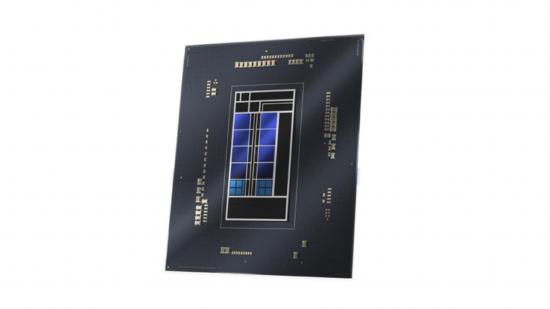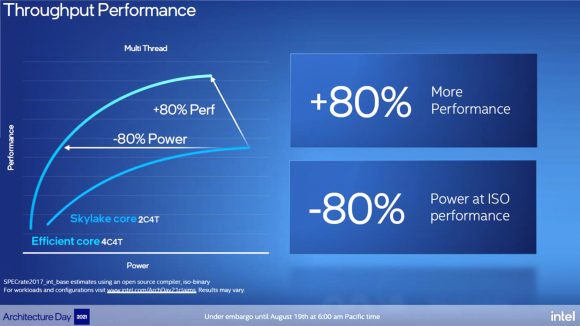Intel’s annual Architecture Day has come and gone, and it’s not all about its exciting Arc GPUs and Nvidia DLSS competitor, XeSS. Shining the spotlight on its upcoming 12th generation processors, Intel has revealed what to expect from Alder Lake when it arrives later this year, including what’s in store for gamers.
Alder Lake will feature the company’s second-generation Hybrid Technology built on more advanced Intel 7 process nodes, which splits cores into performance-based ‘P-cores’ and efficient ‘E-cores’. We’ve yet to see how many each desktop CPU carries, but we know the flagship chip will contain eight of each, amounting to 24 threads.
P-cores are the same kind that we’re familiar with on most gaming CPUs, offering multiple threads per core but focusing primarily on single-threaded workloads and Hyper-Threading. The only difference here is the generational jump provided by its new Golden Cove microarchitecture. E-cores are limited to one thread per core because they’re physically smaller, with around four of them fitting into a single P-core. These are based on Gracemount architecture and are intended to offload secondary tasks by handling multi-threaded workloads and improve the power-to-performance ratio.
In fact, Intel claims that E-cores in a quad configuration offer up to 80% more performance than a dual-core Skylake CPU or require 80% less power using the same top frequency – which isn’t too surprising given that there are five generations between them.
Intel puts a new Thread Director at the helm to communicate with the operating system (in this case, Windows 11), and schedule tasks between the two types based on your thermal and power settings. General Manager Ran Berenson tells PC Gamer that priority tasks like gaming will use the P-cores, while streaming and web browsing can run on the E-cores, meaning “you can run the game in the same performance even if you have other tasks running in parallel.”
Outside of its core makeup, Alder Lake will support up to four PCIe Gen4 lanes and 16 lanes of PCIe Gen5, preparing it for next-generation GPUs that adopt the new standard. Intel also confirms that Alder Lake will support both DDR4 and DDR5 memory.
Since you’ll need to upgrade to an LGA-1700 chipset, this means you’ll need to pay extra attention to what features the 600-series motherboard packs as gaming RAM standards aren’t usually mix-and-match. You might need to upgrade your CPU cooler, too, as Intel famously shifts its brackets often.

